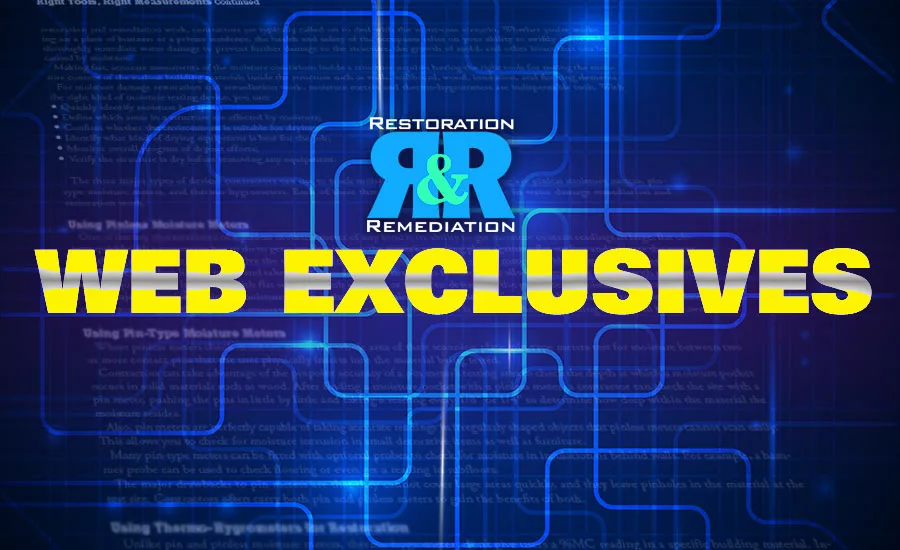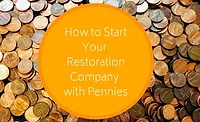Web Exclusive
Property Restoration Company Acquisitions
What do acquisitions mean for the restoration industry?

There have been recent changes in the property restoration industry that are noteworthy. Here are the answers to some questions that may arise regarding how those changes will affect the industry in the long run.
Do recent acquisitions change the property restoration landscape?
One key distinctive for the majority of the players within the property restoration space has been the commitment to independence. Recent mergers and acquisitions have brought the industry closer to climbing the ranks among the larger companies in the United States. Does the industry benefit from aligning itself with outside money, influence and direction? It will be interesting to see how the leaders of these companies maintain their forward progress while keeping their identity when partnering with larger organizations.
One of the largest and most well-known companies in property restoration is acquired
SERVPRO announced earlier this year that they are being acquired by The Blackstone Group which is a publicly traded company (NYSE:BX). With such a large player in the industry being acquired there are mixed messages that ripple through the minds of restorers. From a pessimistic view, the thought occurs that if SERVPRO can’t make it as an independent, how can anyone? Few could argue that anyone in the industry has been more aggressive than SERVPRO with their broad outreach directly to the public. For their efforts they have become the closest to a known commodity. It shouldn’t be shocking then that they are on the forefront of a movement which could position them for much broader and potentially faster growth.
How many acquisitions have there been in property restoration?
Disaster response is still gaining prominence within the minds of the general public. As such, mergers and acquisitions within the industry do not typically garner widespread attention. Leaders in the property restoration space have long followed a series of acquisition as a growth model. Some of those include:
- BELFOR Property Restoration has been consistently acquiring companies as well as adding 1-800 Water Damage into their franchise segment.
- ServiceMaster has a blend of franchise groups which include Terminix and Merry Maids.
- Response Team 1 started their growth with mergers and acquisitions.
- Disaster Kleenup International (DKI) has diversified with Pro Supply and Consultants.
- Harbro has joined the Restoration Affiliates.
These activities are not unique to property restoration. Alliances such as these mirror the growth, acquisitions and partnership activities of business at large. Insurance carriers as well as Third Party Administrators (TPA) have been doing the same. Eugene, Oregon based Alacrity Services was acquired by Lowes and then more recently by Worley Claims Services. We are used to large restoration companies acquiring smaller organizations but this seems to be a new, or more public, trend of being acquired.
What is the difference between merger and acquisition?
According to Investopedia, key aspects of mergers and acquisitions include:
- Mergers combine two companies into a new entity. They are usually all equity.
- Acquisitions occur when one company buys enough equity in another to become its owner. These can be all cash, all equity, or, more commonly, a combination of both.
- Acquisition of debt can also be used as part of an acquisition strategy.
At their best, mergers and acquisitions allow companies to consolidate power, expand capacity and expedite growth. This video outlines mergers, acquisitions and discusses some common failures.
What do acquisitions mean for the restoration industry?
Time will tell whether these acquisitions will be positive for the companies involved as well as the industry at large. As referenced in the video above, over $2.4 trillion dollars a year is invested in mergers and acquisitions (M&A) and yet the failure rate is 70-90%. Even so, the upside could lead to power partnerships such as Facebook and Instagram or Travelers and Citigroup. Underperforming companies could receive new structure that gets them back on track. When organizations join forces, they could expand access to capital to seize upon competitive advantages that might otherwise be difficult. Or incompatibility could lead to negative outcomes for both parties.
What is the key to success with acquisitions?
As noted, the failure rate averages out at 80% for mergers and acquisitions. Some of these are desperate grabs at the end of a business’ life cycle. Sears and Kmart merging falls into this category. Key factors in a merger between two companies include people, process, technology and culture. When there is a lack of synergy, misalignment of values, culture clash and poor management of the transition, failure is all but guaranteed. On the other hand, mergers can lead to successful partnerships and industry dominance. Verizon, which was born from the merger between Bell Atlantic and GTE, has lead the pack over their industry for years. It will be interesting to watch how SERVPRO and BELFOR manage their futures with their new partners.
What do acquisitions mean for restoration companies?
The SERVPRO acquisition is presented as a recapitalization deal. According to the news release, the Isaacson family, which founded Servpro, “Will continue to be significant shareholders in the business going forward.” In addition to the investment benefits, many see there being a practical mutual internal benefit between the two companies regarding services. Blackstone manages an extensive list of properties and SERVPRO provides property restoration services. BELFOR Property Restoration was also recently acquired by American Securities. The timing of both partnerships seems to indicate that these organizations had arrived at the same conclusions regarding the advantage of such an action. It is interesting to note that both of these companies invest heavily in national catastrophe response which requires access to capital in order to fund operations.
Acquisition success stories in other industries
While there isn’t a direct correlation, perhaps there is a roadmap to success that can be extracted from the acquisition of craft breweries by the conglomerates. In Bend, Oregon craft brewer 10 Barrell Brewing Co. was acquired by Anheuser Busch InBev. By all appearances, InBev has respected the value 10 Barrell brought to the table and served to bolster their operations. Brothers Jeremy and Chris Cox of 10 Barrell commented a year later, “At the time, we made a decision for our company and employees. It was one of the best decisions of our lives.” When the investment firm allows the company to continue doing what made them successful and doesn’t overthrow the culture, there is an opportunity for mutual benefit. If the parties involved respect each other’s strengths and are mindful of the process of merging cultures we could see some amazing things from our industry.
Looking for a reprint of this article?
From high-res PDFs to custom plaques, order your copy today!






